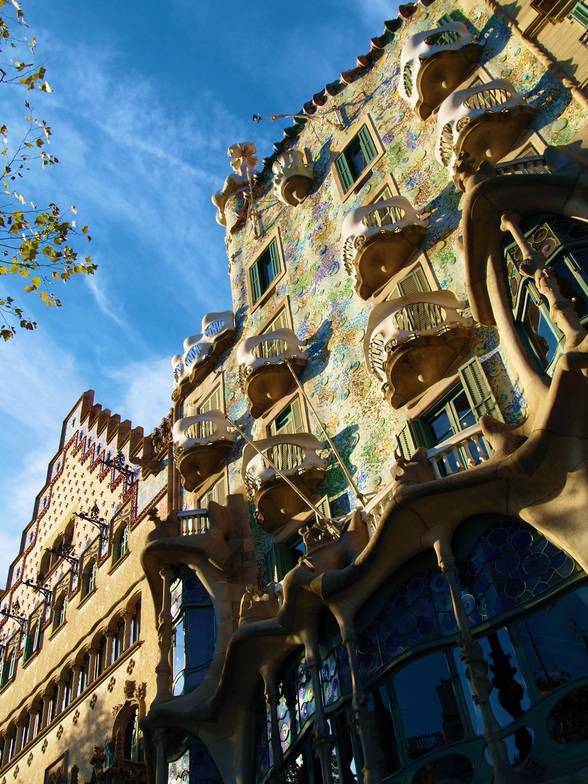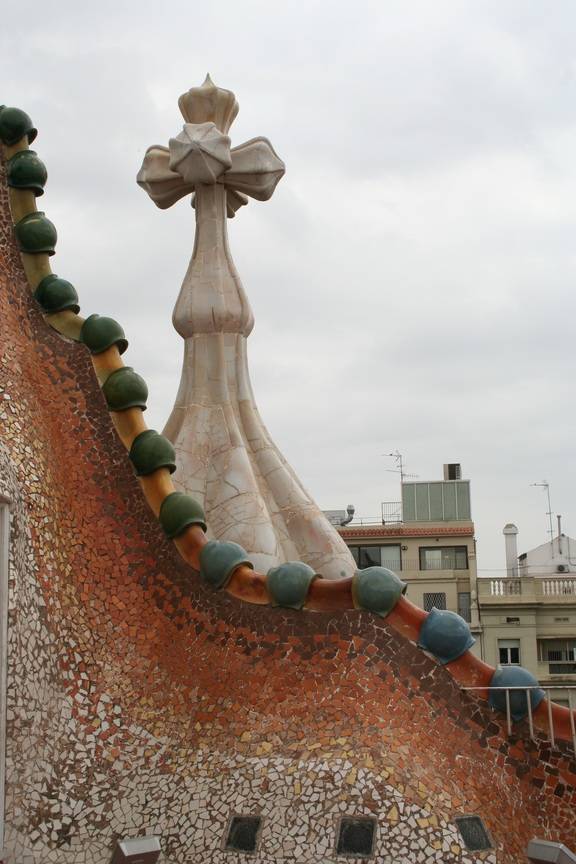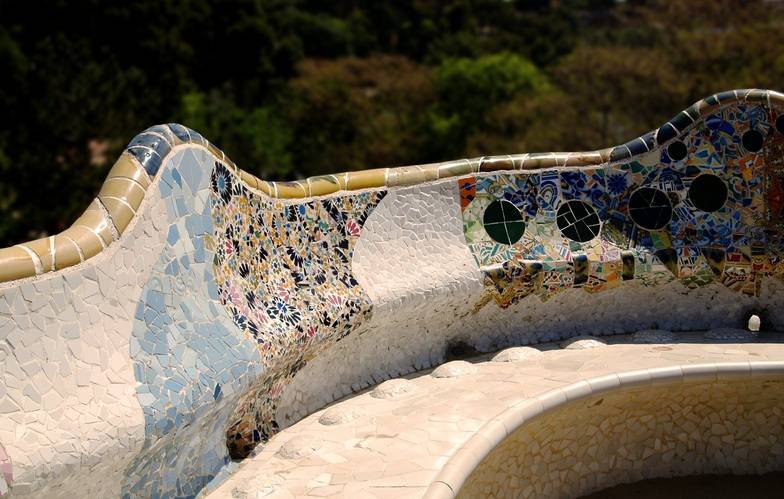Catalan Modernism was an artistic and cultural movement that flourished in Catalonia in the late nineteenth and early twentieth centuries. It was framed within the European modernist current, known in other countries as Art Nouveau in France and Belgium, Jugendstil in Germany or Sezession in Austria. However, Catalan modernism had an identity of its own.
At Barcino Designs we will discover the characteristics of Catalan Modernism in architecture and painting.We tell you all about it!

Historical context of Catalan Modernism
Catalan Modernism arose from the industrialization and the rise of the Catalan bourgeoisie.. The new wealthy classes sought to express their identity through art and architecture, so they looked for a style that combined tradition and modernity.
Catalan modernism was also closely linked to the Renaixença movement, a process of recovery of Catalan language, culture and identity. Renaixença, a process of recovery of the Catalan language, culture and identity. Through architecture, painting, literature and the decorative arts, modernist artists expressed nationalist pride and the exaltation of nature.
Catalan modernist architecture led to the creation of buildings, both public and private, that transformed Barcelona and other Catalan cities. This golden period of art and architecture left an impressive legacy, with such figures as Antoni Gaudí, Lluís Domènech i Montaner and Josep Puig i Cadafalch .
What is Catalan modernism and its characteristics?
Catalan Modernism was an artistic and cultural movement that developed in Catalonia between approximately 1885 and 1920. It was inspired by European trends, but with its own differentiated character.
Unlike other more academic architectural styles, Catalan modernism was committed to creative freedom, experimentation with materials and the fusion of different artistic disciplines.. It was not limited only to architecture, but also had a strong presence in painting, sculpture, interior design, furniture and literature.
The characteristics of Catalan modernism are:
- Inspiration in nature. Modernist artists took nature as a source of inspiration, capturing organic forms in their designs. Thus, in the works there are references to flowers, leaves, animals and geometric structures based on biology.
- Use of curves and undulations. Unlike classical architecture based on straight lines and sharp angles, Catalan modernism incorporated curves and undulations.
- Mix of artistic disciplines. Catalan modernism integrated various artistic disciplines within the architecture. Great importance was given to ceramics, glass, mosaics (such as trencadís ) and carpentry.
- Use of innovative materials. He also tried new techniques and materials such as wrought iron, colored glass and cement.
- Presence of symbolism and mythology. Many modernist works include symbolic references related to mythology, religion or Catalan history. One example is the presence of the dragon of St. George, patron saint of Catalonia, in several of Gaudí’s works.
- The importance of light and color. Natural lighting and the use of color were fundamental in the modernist aesthetic. We can see it in the stained glass windows and multicolored mosaics.
Catalan modernism has masterpieces that are a symbol of identity and culture in Catalonia.

Catalan modernist architecture
Catalan modernist architecture is one of the most important manifestations of modernism in Catalonia. These constructions are distinguished by a series of architectural elements such as the following:
- Trencadís: It is the mosaic technique created by Antoni Gaudí. It consists of irregular fragments of ceramic, glass or broken tiles that are glued on surfaces.
- Wrought iron: It was used in balconies, railings, gates and lampposts. Organic designs simulating plant or animal forms were used.
- Stained glass and stained glass windows: Large windows decorated with stained glass that filtered the light in an artistic manner were created.
- Ornamental details: Modernist buildings incorporated sculptures, reliefs and decorative elements inspired by nature, such as flowers, leaves, animals, etc.
- Facades with movement: With Catalan modernism, there was a shift from rigidity in the facades to give way to more movement, volumes and organic shapes that seemed to be sculpted in stone.
Main Catalan modernist architects and their works
Catalan modernism had great architects who marked a before and after in the history of architecture. Here we leave you a list of the most important numbers:
Antoni Gaudí (1852-1926)
It is the maximum exponent of Catalan modernism.. The artist took architecture to another level by integrating natural forms, organic structures and unique craft techniques. Among his most important works are:
- Sagrada Familia (1882-present): It is his masterpiece and is still under construction. This basilica combines gothic and modernist elements with religious symbolism.
- Güell Park (1900-1914): It is an urban park full of elements of trencadís, and with forms inspired by nature.
- Batlló House (1904-1906): It is a modernist building with an undulating façade and colorful ceramic roof. The building is inspired by the sea and the legend of Sant Jordi.
- Casa Milà (La Pedrera ) (1906-1912): A building with a novel structure without load-bearing walls and a rooftop with surrealistic-shaped chimneys.
Lluís Domènech i Montaner (1850-1923)
Domènech i Montaner is another of the most important Catalan modernist architects. His most important modernist works are:
- Palace of Catalan Music (1905-1908): It is a spectacular auditorium with an iron structure and glass dome that allows natural light to enter.
- Sant Pau Hospital (1902-1930): This is a modernist hospital complex with pavilions surrounded by gardens and trencadís.
Josep Puig i Cadafalch (1867-1956)
Its modernist style is characterized by the influence of influence of Gothic and Catalan Renaissance. His most representative works include:
- Amatller House (1898-1900): Inspired by the Flemish Gothic style, with a stepped façade and detailed sculptural decoration.
- House of the Pinchas (1905): A building with the appearance of a medieval castle, crowned with pointed towers.

Catalan modernist painting and other art styles
Catalan modernism also excelled in painting, sculpture painting, sculpture and decorative arts.
We begin by talking about Catalan Catalan modernist painting and the most outstanding artists. of this movement. They are as follows:
- Ramon CasasHe is the master of the modernist portrait. He painted works such as The cargo and and advertising posters of the time.
- Santiago Rusiñol: He was a painter, writer and promoter of Catalan modernism. He created landscapes of gardens and architectural corners.
- Joaquim Mir: Catalan modernist painter noted for his landscapes full of color, expressive brushstrokes and lots of light.
Style and themes in Catalan modernist painting
Catalan modernist painters were inspired by nature, everyday life and symbolism. Their works feature:
- Portraits: Artists focused on the human figure, especially the bourgeoisie and women as a symbol of beauty and mystery.
- Landscapes: Representations of nature were carried out with a poetic vision.
- Costumbrist scenes: Works were made that reflected bohemian life, cafes and Barcelona in the late 19th and early 20th centuries.
Catalan modernist typography
A lesser-known, but very influential aspect of Catalan modernism is its use of typography in its use of typography in cartouches, lettering and publications.
- Advertising posters In works such as those of Ramon Casas and Alexandre de Riquer, the Catalan modernist typography, which was decorative and stylized, became popular.
- Commercial signs Modernist stores and cafés used decorative letters with curves and floral details.
The legacy of Catalan modernism
Catalan modernism has been recognized worldwide as an artistic movement of great importance. Several of its most emblematic works have been declared World Heritage Sites by UNESCO, such as the Sagrada Familia, Park Güell, Casa Batlló and the Palau de la Música Catalana. All this has turned Barcelona in a destination for architecture and art lovers. .
The Catalan modernist style has inspired modern and contemporary architects. Figures such as Santiago Calatrava, Frank Gehry or Zaha Hadid have taken elements of modernism in their designs.
Today, modernism remains a symbol of Catalonia. In addition, the Modernist Route of Barcelona or the modernist fairs in cities like Terrassa and Sitges keep alive the essence of this movement.
At Barcino Designs we pay tribute every day to this Catalan artistic movement. We create figures and decorative elements that are inspired by Gaudí’s trencadís technique to create objects that are elegant, colorful and with a more avant-garde design.

